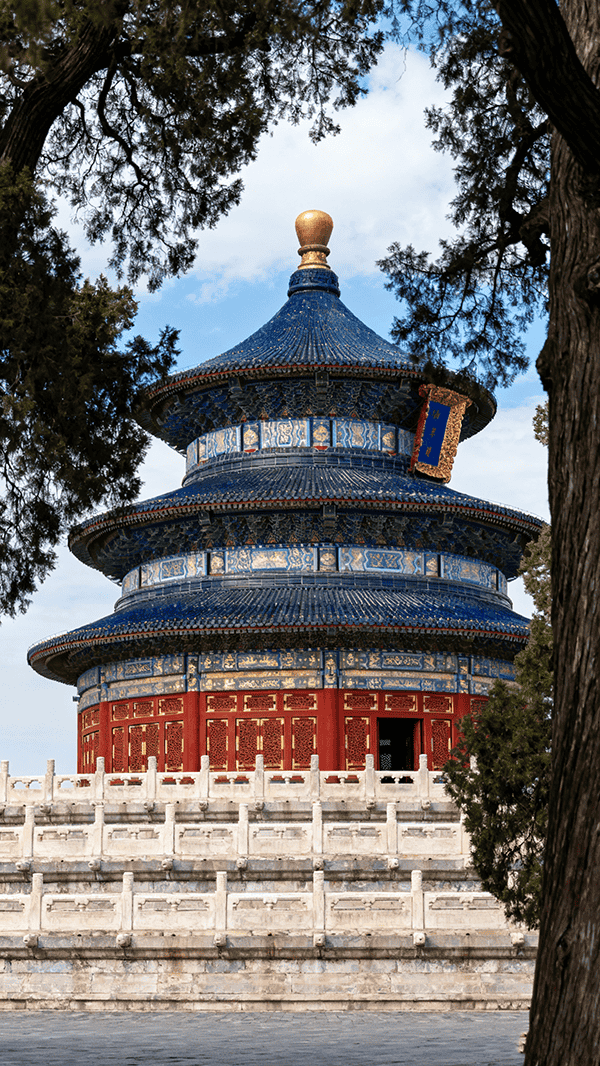In the southeastern part of ancient Beijing stands an architectural complex that carries six hundred years of Chinese civilization—the Temple of Heaven. As the sacred site where emperors of the Ming and Qing dynasties worshipped heaven and prayed for good harvests, it is not only the largest and most complete ancient sacrificial complex dedicated to heaven in China but also, with its exquisite architectural layout and profound cultural significance, a masterpiece exemplifying the concept of “harmony between heaven and humanity” in the history of human civilization.
Constructed in the 18th year of the Yongle era of the Ming Dynasty (1420), the Temple of Heaven was initially built concurrently with the Forbidden City and was originally named the “Altar of Heaven and Earth.” It was renamed the Temple of Heaven in the 9th year of the Jiajing era of the Ming Dynasty (1530), dedicated exclusively to the worship of the Supreme Emperor of Heaven. The entire complex spans approximately 2.73 million square meters, equivalent to four times the size of the Forbidden City. Its layout strictly adheres to the traditional philosophical concept of “a circular heaven and a square earth”: the northern part centers on the circular Hall of Prayer for Good Harvests, symbolizing heaven; the southern part is based on the square Imperial Vault of Heaven, symbolizing earth; and the two are connected by the 360-meter-long and 28-meter-wide Danbi Bridge, forming an overall pattern of “circular in the north and square in the south,” echoing the ancient understanding of cosmic order.
The core structures of the Temple of Heaven are the Hall of Prayer for Good Harvests and the Circular Mound Altar. The Hall of Prayer for Good Harvests stands on a three-tiered white marble base, reaching a height of 38 meters and a diameter of 32.7 meters. The entire hall is built of wood without a single iron nail. The roof is covered with blue glazed tiles, symbolizing imperial power, and the gilded pinnacle at the top gleams brilliantly in the sunlight. Inside the hall, 28 pillars of nanmu wood represent the four seasons, twelve months, twelve two-hour periods of the day, and the twenty-eight constellations, each pillar embodying the ancients’ reverence for the laws of nature. Every year on the first Xin day of the first lunar month, the emperor would hold the Grand Ceremony for Praying for Good Harvests here, praying for favorable weather and abundant harvests in the coming year.
The Circular Mound Altar was the venue for the emperor’s ceremonies to worship heaven. Also known as the “Altar for Worshiping Heaven,” it is circular in shape and built of white marble, divided into three tiers with nine steps on each level, symbolizing the “nine layers of heaven.” The most remarkable feature is the stone slabs on the altar’s surface: the center of the upper tier is a circular stone slab called the “Center of Heaven Stone,” where even a soft whisper produces a distinct echo, as if resonating with heaven and earth. This acoustic phenomenon is not accidental but was achieved through the precise calculations of ancient craftsmen regarding slab thickness and spacing, making it a marvel of ancient architectural acoustics.
Beyond the architecture itself, the details of the Temple of Heaven are imbued with profound cultural symbolism. For example, the altar walls are divided into inner and outer sections, with the outer wall square and the inner wall circular, symbolizing “a circular heaven and a square earth.” The complex is home to over 3,000 ancient cypress trees, among which the “Nine-Dragon Cypress,” located west of the Hall of Prayer for Good Harvests, is nearly six hundred years old. Its trunk is textured like nine intertwined dragons, and it is said to have been planted during the Yongle era of the Ming Dynasty, now serving as a “living cultural relic” of the Temple of Heaven. Additionally, the sacrificial rituals at the Temple of Heaven were intricate and solemn, with every detail—from the arrangement of ritual vessels and the choreography of music and dance to the emperor’s attire—strictly following the norms of the Rites of Zhou, reflecting the ancients’ piety toward heaven and earth.
Today, the Temple of Heaven is no longer an exclusive imperial sacrificial site but has become a cultural park open to the public. In 1998, it was inscribed on the UNESCO World Heritage List, with the evaluation: “The Temple of Heaven is an outstanding example of Chinese ancient architectural art. With its rigorous planning, magnificent architecture, and rich cultural connotations, it showcases ancient China’s understanding of the universe and reverence for heaven.” Every year, millions of visitors come here to stroll under the shade of ancient cypresses or pause before the Hall of Prayer for Good Harvests, experiencing the charm of traditional Eastern culture.
From an imperial altar to a World Heritage site, the Temple of Heaven has witnessed six hundred years of historical changes in China and embodies the Chinese nation’s eternal pursuit of harmony between heaven and earth. It is not merely a structure but a solidified cultural history book, narrating the wisdom and glory of Eastern civilization to the world.
